Keynote Speakers
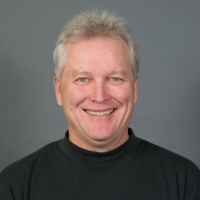
Session 1: Doug Kinnison (National Center for Atmospheric Research, USA)
“Polar ozone recovery: Challenges and Uncertainties in Model Projections”
Douglas Kinnison is a Project Scientist IV at the National Center for Atmospheric Research in Boulder Colorado. He obtained his B.S. degree in chemistry from Colorado State University and his Ph.D. degree (1989) in Chemistry at the University of California, Berkeley working with Professor Harold Johnston and Dr. Donald Wuebbles. He is currently responsible for the development, implementation, and evaluation of the chemistry component of the Whole Atmosphere Community Climate Model (WACCM). He has been a coauthor of the 1998, 2006, 2010, and 2022 World Meteorological Organization / United Nations Environmental Program Scientific Assessment of Ozone Depletion and a member of the WMO 2018 Steering Committee. He was a lead author of the SPARC 2010 Report on the Evaluation of Chemistry-Climate Models. His specialties include atmospheric chemistry and modeling of the global atmosphere. This includes the role that chemistry plays in understanding the impact of halogens, volcanic eruptions, and solar forcing on both tropospheric and stratospheric ozone abundance and trends.
The discovery of the Antarctic ozone hole in 1985 motivated the atmospheric science community to better understand the chemical, dynamical, and physical processes that control ozone abundance in the polar regions. After ~40 years of regulations, monitoring, and research on polar ozone the representation of the observable ozone trend is well documented and generally understood [1]. This presentation will summarise how well three-dimensional chemical climate models (CCMs) represent polar ozone in the observable period and highlight the many uncertainties that affect future model projections. When thinking about model projections, from either one CCM or an ensemble of CCMs, one needs to consider three types of uncertainties: 1) scenario uncertainty; 2) structural uncertainty; and 3) internal variability [2]. Scenario uncertainty, whereby the forecast specification of ozone-depleting substances (ODS) and greenhouse gases (GHG) can have large impacts on a given ozone recovery diagnostic. Scenario uncertainty also addresses whether the ODS forecast follows (or not) the Montreal Protocol and its amendments and adjustments [1]. Representation of the CFC banks is also included in this uncertainty. In addition, the representation/inclusion of non-controlled substances (e.g., short-lived chlorine substances) is another source of scenario uncertainty. CCM structural uncertainty can arise from the representation of horizontal and vertical resolution (e.g., high-top vs low-top models). This uncertainty also addresses details regarding the formulation of polar heterogeneous chemistry, volcanic and wildfire chemistry, representation of the ocean state (e.g., interactive deep ocean), and dynamical representation of the QBO and frequency of sudden stratospheric warmings (SSWs). The third uncertainty is connected to the representation of the internal variability of the CCM. This is typically examined by running (for each CCM) multiple realisations and forming ensemble mean averages. All three of the above uncertainties in model representation can significantly affect the ozone return date for a chosen diagnostic.
References [1] World Meteorological Organization (WMO). Scientific Assessment of Ozone Depletion: 2022, GAW Report No. 278, 509 pp.; WMO: Geneva, 2022. [2] Amos et al., Projecting ozone hole recovery using an ensemble of chemistry-climate models weighted by model performance and independence, Atmos. Chem. Phys., 18, 8409-8438 (2020).
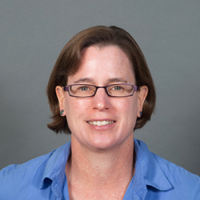
Session 2: Helen Worden (National Center for Atmospheric Research, USA)
"The Tropospheric Ozone Assessment Report (TOAR), Phase II"
Dr. Helen Worden is the NCAR/ACOM Deputy Lab Director and the U.S. Principal Investigator for Terra/MOPITT. She is interested in multi-decadal trends of carbon monoxide that indicate changing emissions of pollution with global and regional implications. She is also co-chair of the IGAC Tropospheric Ozone Assessment Report (TOAR), Phase-II, that will produce an updated assessment of tropospheric ozone’s global distribution and trends, along with distributions and trends of ozone precursor emissions, and aims to quantify the impacts of tropospheric ozone on climate, human health and vegetation. She earned her B.A. in Physics from the University of Colorado, Boulder and her PhD in Elementary Particle Physics from Cornell University. She worked several years at JPL/CalTech in Pasadena, CA before moving to Boulder, Colorado to work at NCAR.
The Tropospheric Ozone Assessment Report (TOAR) is a highly successful activity of IGAC (International Global Atmospheric Chemistry) with a mission to provide the research community with an up-to-date scientific assessment of tropospheric ozone’s global distribution and trends from the surface to the tropopause. The first phase of TOAR (2014-2019) produced an open-access database with easily accessible web services to evaluate ozone metrics at all available monitoring sites worldwide, affording scientists the first observation-based view of the global surface ozone distribution. The first assessment consisted of 10 publications in Elementa that use the surface data, peer-reviewed literature and new analyses. TOAR is now in its second phase (TOAR-II, 2020-2024), with active participation from over 150 scientists from 31 countries. Through the formation of 14 working groups, TOAR-II will produce an updated assessment of tropospheric ozone’s global distribution and trends, along with distributions and trends of ozone precursor emissions, and aims to quantify the impacts of tropospheric ozone on climate, human health and vegetation (e.g., crops). We will present the current status of the TOAR-II data and the scope of publications expected for a TOAR Community Special Issue followed by the assessment papers.
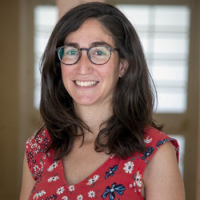
Session 3: Marta Abalos ( Universidad Complutense de Madrid, Spain )
"Recent past and future trends in stratospheric ozone and circulation"
Marta Abalos is Associate Professor in the Department of Earth Physics and Astrophysics of Universidad Complutense de Madrid (Spain). She received her Ph.D. in Physics in 2014. She worked a postdoctoral researcher at the Laboratoire de Météorologie Dynamique, École Normale Supérieure de Paris (France), and at the National Center for Atmospheric Research, Boulder, CO (USA). She is a coauthor of the 2018 and 2022 WMO/UNEP Ozone Assessment reports. Her research focuses on large-scale dynamics and tracer transport in the upper troposphere and lower stratosphere, with an emphasis on trends forced by anthropogenic emissions of greenhouse gases and ozone-depleting substances.
The rate of recovery of the ozone layer is strongly coupled to changes in the stratospheric circulation. This talk will present an updated overview on the influence of the dynamics on recent past and future ozone recovery trends. While signs of ozone recovery since the end of the 20th century have already been detected in the upper stratosphere and the polar regions, observed trends remain negative in the lower stratosphere midlatitudes. This contrasts the predominantly positive trends in chemistry-climate models in that region. The large natural climate variability and the complexity of transport processes in this region are key to interpret the lack of agreement over the relatively short time period. On longer time scales, projections of ozone recovery over the 21st century present a large spread even within a fixed climate forcing scenario, particularly over the Arctic. The main dynamical sources of uncertainty in the future evolution of ozone will be explored, as well as the contributions from greenhouse gases and ozone depleting substances.
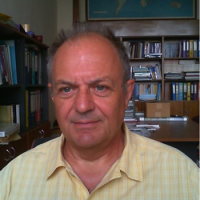
Session 4: Alkis Bais (The Aristotle University of Thessaloniki, Greece)
Interactive changes of ozone, UV radiation, and climate in the 21st century and implications for the environment
Alkis Bais is a Professor at the Aristotle University of Thessaloniki (AUTh) and Head of the Laboratory of Atmospheric Physics (2002-2023). He received his Ph.D. degree in 1984 from the Physics Department of AUTh. He has been PI and member of several national and international research projects mainly related to solar UV radiation and ground-based remote sensing of atmospheric composition. He is member of the Environmental Effects Assessment Panel of UNEP since 2000 and chapter lead of the 2015 and 2019 assessment reports. He was lead author (2007) and co-author (2003) in the WMO/UNEP scientific assessments of ozone depletion. He has served as chairman of the Scientific Advisory Group for Ozone (SAG-O3) of WMO, member of the SAG-O3 and UV since 2029 and member of the Instrumentation Working Group of the WMO AD HOC Scientific Steering Committee on UV Monitoring (1994-2011). He has been a member of the International Ozone Commission (2008-2016) and the International Radiation Commission (2013-2020). His research has been focused on the transfer of solar ultraviolet (UV) radiation in the atmosphere and its relations to stratospheric ozone, aerosols and clouds. His experimental work includes monitoring of spectral UV radiation, aerosols, ozone and other trace gases with remote sensing techniques, including DOAS/MAX-DOAS, as well as instrumentation technology, data management, QA/QC procedures and development and testing of calibration procedures for spectral and broadband solar radiation instruments.
The interactive effects of stratospheric ozone, solar UV radiation, and climate in the 21st century involve a complex interplay of anthropogenic influences and natural processes. Understanding and addressing these interactions are essential for developing effective strategies to mitigate adverse impacts on ecosystems, human health, and the environment. The levels of UV radiation at the surface are mainly determined by atmospheric processes involving attenuation by ozone, clouds and aerosols, or enhancement by surface reflectivity. The environmental effects of changes in atmospheric ozone are mediated mainly through changes in UV-B radiation but also through regional changes in weather patterns. Exposure of humans to UV radiation can have both adverse and beneficial health effects which are also related to behaviour.
The onset of ozone depletion in the 1980s resulted in increased levels of solar UV-B radiation at the surface, which continue to occur, especially in the high latitudes of the southern hemisphere, despite the signs of ozone recovery. However, the projected super-recovery of total ozone towards the end of the 21st century to levels above the pre ozone depletion period will lead to decreases in UV-B radiation. These variations of UV-B radiation have affected and are expected to affect in different ways human health and ecosystems. Moreover, climate change due to increasing GHGs is already influencing factors such as clouds, surface reflectivity, and, to a certain extent, aerosols, complicating further the variability of solar UV radiation in the future and the concomitant environmental effects. Due to regional dependencies of all these effects different regions are expected to experience varying impacts.
The variations of ozone, cloudiness, surface reflectivity and aerosols during the 21st century as predicted by state of the art earth-system models are used to simulate with the aid of radiative transfer modelling the variability of surface UV radiation over the globe. The projected changes in the levels of UV radiation under different socioeconomic pathways are discussed in the context of their effects on human health and on ecosystems.
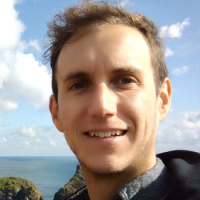
Session 5: Luke Western (University of Bristol, UK)
"Why emissions of some ozone-depleting substances are still increasing"
Luke Western is now at the University of Bristol as a Marie Curie Research Fellow following 2 years working at the Global Monitoring Laboratory under the EU-funded fellowship. He mainly works on quantifying emissions of greenhouse gases and ozone-depleting substances as part of the AGAGE, and formally NOAA, networks. He was also involved in the studies tracking CFC-11 emissions to China, and the resurgence of emissions of other gases controlled under the Montreal Protocol. Luke Western was also a co-author in the 2022 WMO/UNEP Ozone Assessment.
The production of most long-lived ozone depleting substances has been, or is being, phased out under the Montreal Protocol. Despite the controls, emissions of some ozone-depleting substances are still increasing. The drivers behind the increasing trends differ depending on the ozone-depleting substances, such as emissions from the bank, from their use as in the production of other chemicals, unreported production of ozone-depleting substances after their phase out, and some which are unknown. Here I will discuss how measurements of ozone-depleting substances, combined with models of atmospheric transport, can shed light on these seemingly contradictory trends between production and emissions, and discuss the implications for stratospheric ozone recovery and climate.

Session 6: Alberto Redondas (AEMET- Meteorological State Agency, Spain)
"EUBREWNET new developments , uncertainty and updated algorithm"
Senior Scientist and ozone and spectral UV group manager at the Izaña Atmospheric Research Centre since 1995. Scientific coordinator of the Spanish Brewer Spectroradiometer Network from 1999 to 2004 and the Spanish UV Index forecast program. Participated as an investigator of the EU-projects: SUVDAMA, SUSPEN and REVUE. He has been the scientific manager of the RBCC-E since 2003, responsible for the organization of RBCC-E campaigns, including the participation in SAUNA campaigns. He has been a member of the WMO-GAW (Global Atmosphere Watch) Ozone Science Advisory Group since 2005, a member of the International Ozone Commission (IOC) from 2016 to 2024, and part of the Steering Committee of NDACC (Network for Detection of Climate Change). Vice Chairman of the COST-ACTION 1207 EUBREWNET (European Brewer Network), and now responsible for the database and QA/QC of the network. He is the Principal Investigator of the ESA project “CEOS INTERCALIBRATION OF SPECTROMETER AND LIDAR”, EGB-SVN (EarthCare Ground Base- Surface Validation Network), EMRP project ATMOZ (Traceability of Atmospheric total column Ozone) and manager of ozone calibration facility for the PANDORA network.
The EUBREWNET network is a successful COST action (2013-2014) that aims to harmonize the Brewer spectrometer measurements of ozone, ultraviolet radiation and AOD. It is a spatially consistent network of Brewer Ozone Spectrophotometers providing O3, SO2, UV and AOD data. The network has grown from a European initiative to a global one, with 70 spectrometers and 40 stations around the world. The network provides QA/QC observations that are centrally processed and distributed by AEMET. It also serves as a Fiducial Reference Network for satellite validation (ESA), Air Quality Copernicus CAMS and Copernicus Climate Studies. The network is managed and operated by AEMET after the completion of the COST action. It is based on the Iberonesia network that comprises the Brewer instruments of Portugal and Spain, using the developments of the calibration centers RBCC-E and WRC. We present the network updates with the recently improved algorithm to include the updated ozone cross section, the uncertainty budget and the AOD calculation in the UV range.
